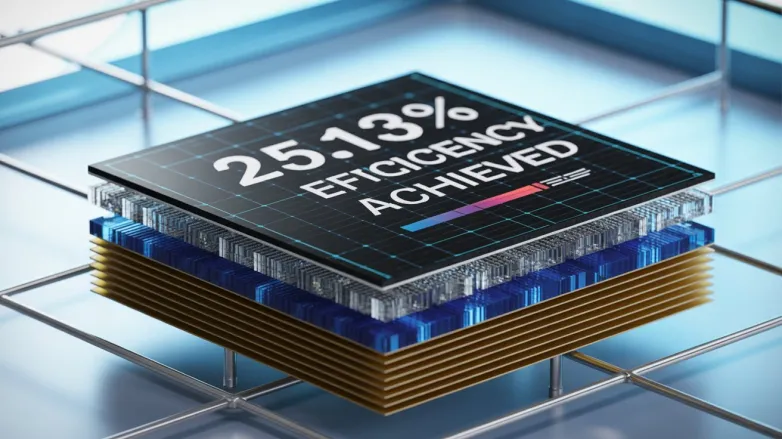MXene-enhanced perovskite cell hits 25.13% with cooler operation
- UESTC researchers achieved a certified 25.13% perovskite efficiency by adding Ti₃C₂Tₓ MXene to the absorber, improving heat dissipation, passivation and stability.

Researchers at the University of Electronic Science and Technology of China (UESTC) have reported a certified 25.13% power-conversion efficiency for a perovskite solar cell by incorporating Ti₃C₂Tₓ MXene nanosheets into the light-absorbing layer. The additive acts on several fronts at once—enhancing thermal conductivity, passivating defects and improving film morphology—yielding a device that performs better and runs cooler.
The cell stack uses glass/ITO, a SnO₂ electron-transport layer, the MXene-modified perovskite absorber, Spiro-OMeTAD as the hole-transport layer and a gold contact. Embedded Ti₃C₂Tₓ creates heat-conduction pathways that lift the absorber’s thermal conductivity from 0.236 to 0.413 W·m⁻¹·K⁻¹. Under standard illumination, operating temperature dropped by roughly 3°C (from ~42.96°C to ~39.97°C), mitigating heat-driven degradation.
Electrically, the nanosheets help passivate grain-boundary defects, cutting recombination and enabling larger, smoother crystals—surface roughness fell from 24.9 nm to 15.2 nm, while visible-range absorption strengthened. The champion device posted an open-circuit voltage of 1.177 V, short-circuit current density of 25.29 mA/cm² and an 84.4% fill factor—up from 23.70% efficiency for the reference cell without MXene.
Stability results are notable. The MXene-modified device retained about 80% of initial efficiency after 500 hours at 85°C and ~30–35% relative humidity. Under nitrogen with maximum power point tracking, it maintained ~70% after 500 hours, whereas the control degraded to ~20%. Those figures, while pre-commercial, point toward improved durability—long a sticking point for perovskites.
Challenges remain. Ti₃C₂Tₓ synthesis can be costly and complex, so reproducible, lower-cost routes are a priority, as is exploring related MXenes (e.g., Ti₂Cₜₓ). Scaling deposition from lab to manufacturing—slot-die or blade-coating—must preserve passivation and thermal benefits, and long-term encapsulation will ultimately determine field performance.
Even so, the work strengthens the case for multifunctional MXenes in perovskite engineering—tackling heat, defects and charge extraction in one step, and nudging the technology closer to bankable devices.
Also read

